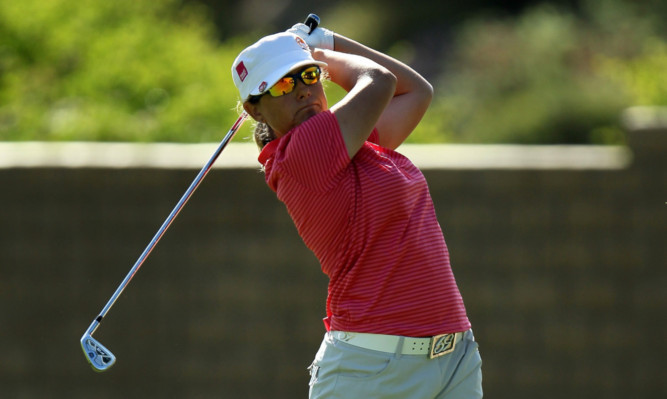
I WAS disappointed to hear that one of Britain’s top female golfers, Karen Stupples, had lost her main sponsor just two weeks before she begins her season.
Her news comes barely a week after Rory McIlroy was unveiled as the new face of Nike in his £156 million deal.
Stupples is a Major Champion and a fine player, but her life is very different from the jet-set lifestyle that the likes of Rory and Tiger Woods have.
She is a hardworking mother, who happens to play golf for a living. Her husband used to be her caddie but he now stays at home to look after their five-year-old son, so Karen is the breadwinner.
What’s happened to her underlines the difficulties surrounding the women’s game in general, especially on the Ladies’ European Tour.
The money is very small and the schedule is intermittent. It’s very expensive to play on it, bearing in mind the travel costs.
About 30 per cent of all golfers are women, but all the money is channelled into the men’s pro game through prize money, sponsorship and TV.
While Rory is a household name as the men’s No. 1, it’s a different story for the top female, Yani Tseng of Taiwan.
The women’s game is now dominated by the Far East, who have eight of the current top 10 in the rankings. They’re all fine players, but it’s difficult to sell the game to sponsors.
The TV coverage is limited and when it is on, you don’t recognise the players, so you switch off. It’s a vicious circle. There is no superstar to hang tournaments on.
Annika Sorenstam and Lorena Ochoa both retired at the top to start a family, while Laura Davies is still probably the biggest name in Europe. No-one has emerged to replace them.
Nike threw money at Michelle Wie and built her up, but she hasn’t lived up to expectations.
If a woman is ever needed for an exhibition or a TV skins game, Sorenstam is always wheeled out rather than a current star. So the Olympics in 2016 will probably be even more important for women’s golf, as it will be an excellent showcase to revive interest. But in the US and in this country, the problems are at grassroots level as it’s becoming ever-harder to get young girls to take up the game.
They’re keen at 12 or 13, but drift away. Golf isn’t ‘cool’ and they become focused on careers and family. That was certainly the case with my two daughters, Kirsty and Laura.
And there is no Jessica Ennis-like role model around to inspire girls to play.
This year, there are two big events to promote the ladies’ game.
The Solheim Cup is often just as dramatic as the Ryder Cup, as shown in 2011 when Europe won on the 18th green of the final match. And the Women’s British Open takes place over the Old Course at St Andrews in August.
Let’s hope people head there in large numbers to support these fine players and give women’s golf the boost it needs.

Enjoy the convenience of having The Sunday Post delivered as a digital ePaper straight to your smartphone, tablet or computer.
Subscribe for only £5.49 a month and enjoy all the benefits of the printed paper as a digital replica.
Subscribe